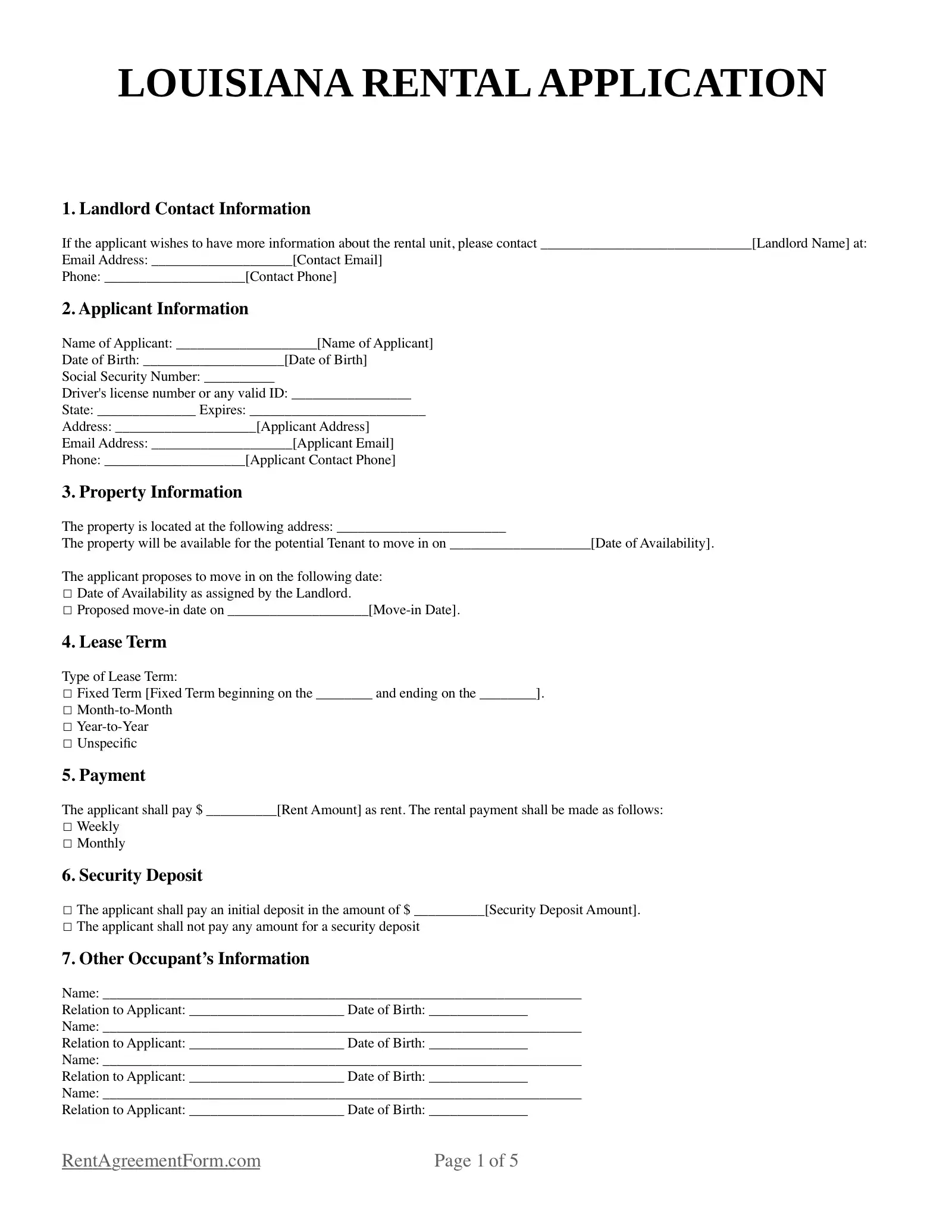Louisiana Rental Application Form
A Louisiana Rental Application Form, like every other rental application form, is a document that contains all the information that a landlord wants to know about a prospective tenant. The interested tenant has to submit the standard form along with a rental application fee. Every tenant should be truthful in the document.
A rental application form will ask for the following information: personal details, identification (driver’s license or social security number), contact information, and proof of income.
The income is vital information that tells the landlord if the tenant can afford to pay rent or not. Usually, the landlord will also ask for proof of income like payroll, bank statement/s, or tax returns. Most landlords will also do a credit check.
Landlords are also interested in the contact information of previous landlords. They will want to know if an application has a prior eviction notice. If there is, it’s also essential to dig into the reason rather than making an outright decision to reject an application.
The tenant should be aware of their rights under the Federal Fair Housing Act. They should know that landlords cannot reject their application based on race, national origin, gender, religion, familial status, and disability.
Templates of printable forms are available online for your convenience.

Rental Application Fee for Louisiana
There is no statute on the amount of rental application fee that a landlord can charge applicants in Louisiana. The average fees collected are between $25 and $75, depending on the area. Most application fees are non-refundable, whether you get the residential rental property or not.
However, the fee will covers the cost of the background check.
Security Deposits in Rental Applications for Louisiana
There is also no statute on the maximum security deposit that a landlord may charge. A security deposit is an amount that a landlord requires a tenant to pay at the beginning of the lease. The purpose of the amount is to cover possible damage to the rental property at the end of the lease period. It may also cover the tenant’s failure to pay rent on time.
The landlord and tenant should have a move-in and move-out list to determine damage to the property at the beginning and end of the lease. If there was nothing amiss on top of the natural wear and tear of the property, the landlord has one month to return the security deposit to the tenant (LA Rev Stat § 9:3251 (2021).